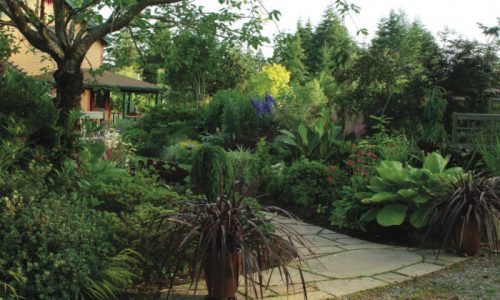Introduction:
In the realm of gaming, Dwarf Fortress stands as a unique masterpiece, offering a complex and immersive experience that has captivated players for years. One of the game’s most intriguing features is its deep soil system, a remarkable simulation of underground l+te depths and explore the fascinating world of Dwarf Fortress deep soil.
Understanding Deep Soil:
In Dwarf Fortress, deep soil refers to the layers of fertile earth found beneath the surface. It is a crucial component for sustaining your dwarves’ agriculture, as it provides the necessary nutrients and moisture for crops to grow. Deep soil can be found below the top layer of soil, stone, and other materials, and its composition can vary greatly depending on the geological characteristics of your generated world.
Composition and Characteristics:
Deep soil is composed of several elements, including loam, clay, silt, and sand. The specific composition of the deep soil layers affects its fertility and drainage properties. For instance, loamy soil tends to be rich in organic matter and retains moisture well, nmaking it ideal for growing the wide range of crops. On the other hand, sandy soil drains quickly but may require additional irrigation to support certain plants.
Stratification and Zonation:
Deep soil in Dwarf Fortress is not uniform. It is stratified into distinct layers, each with its own set of characteristics. As your dwarves dig deeper into the earth, they will encounter various layers of soil, clay, and stone. This stratification adds an element of realism and complexity to the game, requiring players to consider different soil properties when planning their agricultural endeavors.
The zonation of deep soil introduces further complexity. Certain layers may be more fertile than others or contain valuable minerals and gemstones. Additionally, the presence of aquifers can impact the accessibility and usability of deep soil layers, as excessive groundwater can flood your farms or mining operations.
Utilizing Deep Soil for Agriculture:
Deep soil is a valuable resource for sustaining your dwarves’ food production. To harness its potential, you’ll need to designate farm plots on suitable layers of soil, taking into account factors like fertility, drainage, and accessibility. Experimenting with different crops and soil types can help optimize your farming operations.
Crop rotation and soil management play essential roles in maintaining the long-term fertility of deep soil. By alternating the crops you grow in different seasons, you can prevent soil depletion and nutrient imbalance. Additionally, employing strategies like composting and irrigation can enhance soil fertility and ensure the success of your agricultural endeavors.
Challenges and Considerations:
While deep soil in Dwarf Fortress offers exciting possibilities, it also presents challenges and considerations. Unfavorable soil conditions can lead to crop failures, hampering your dwarves’ food supply and overall survival. It’s crucial to plan your agricultural activities carefully, considering factors like soil quality, availability of water sources, and the impact of neighboring underground features.
Geology Matters:
Understanding the geological composition of your generated world can give you valuable insights into the distribution and quality of deep soil layers. Geological surveys and exploratory mining can help you identify areas with high concentrations of fertile soil, allowing you to plan your settlement and agricultural zones strategically.
Soil Testing:
Experimentation is key when it comes to maximizing the productivity of your deep soil. Conduct soil tests by designating small farm plots in different soil layers and observing the growth and yield of various crops. This will help you determine the most suitable crops for each soil type and optimize your farming operations accordingly.
Aquifer Management:
Aquifers can pose significant challenges when it comes to utilizing deep soil. An aquifer is a layer of underground water that can flood your mining operations and farmland. Carefully plan your excavation activities to avoid disrupting aquifers or build effective drainage systems to control water levels and prevent flooding.
Diversify Crops:
To ensure a stable and the sustainable food supply, diversify the crops you grow. Different crops have varying soil requirements and growth cycles. By cultivating a mix of crops in different soil layers, you can mitigate the risks of crop failures and improve overall food production.
Soil Amendments:
Enhance the fertility of your deep soil by incorporating organic matter and soil amendments. Composting, through the use of organic waste and plant matter, can enrich the soil with essential nutrients. Additionally, consider using fertilizers or other soil conditioners to optimize the nutrient balance and pH levels of your deep soil.
Irrigation Systems:
Water is a vital resource for plant growth. Design and implement irrigation systems to ensure your crops receive adequate moisture, especially in drier soil layers. By carefully managing water flow and distribution, you can prevent drought-related crop losses and maintain optimal growing conditions.
Monitor Soil Health:
Keep a close eye on the health of your deep soil layers. Regularly check for signs of nutrient depletion, soil compaction, or pest infestations. Taking proactive measures, such as crop rotation, soil aeration, and pest control, can help maintain the long-term productivity of your deep soil.
In Dwarf Fortress, deep soil is more than just a background element. It’s a dynamic system that requires careful planning, experimentation, and adaptation. By understanding the intricacies of deep soil and employing effective agricultural practices, you can ensure the survival and prosperity of your dwarf colony in the depths.
Mining and Deep Soil:
As you dig deeper into the earth for mining operations, you may come across deep soil layers that contain valuable resources such as ores, gems, and minerals. Balancing your mining endeavors with the preservation of deep soil for agriculture is essential. Consider designating specific mining zones away from your fertile soil layers to prevent accidental destruction and ensure a sustainable resource management approach.
Soil Erosion and Stabilization:
Deep soil layers, like their surface counterparts, can be subject to erosion. Factors such as excessive rainfall or improper irrigation practices can lead to soil erosion and loss of fertility. Implement measures to control erosion, such as contour plowing, terracing, or constructing retaining walls, to stabilize the deep soil and prevent erosion-related issues.
Soil Fungus and Disease:
Just like real-world agriculture, deep soil in Dwarf Fortress is susceptible to fungal infections and diseases that can harm your crops. Keep an eye out for signs of plant diseases, such as wilting, discoloration, or unusual growth patterns. Employing crop rotation, using disease-resistant crop varieties, and implementing appropriate pest management strategies can help mitigate the risks and protect your deep soil’s health.
Seasonal Variations:
Deep soil, like surface soil, experiences seasonal variations that can impact crop growth and productivity. Monitor temperature changes, moisture levels, and light exposure in different soil layers to optimize your farming activities. Adjust your crop selection and planting schedules to align with the seasonal patterns and maximize your yield.
Landscaping and Beautification:
Deep soil can also serve aesthetic and recreational purposes in Dwarf Fortress. Designate certain areas for landscaping projects, where you can create gardens, orchards, or parks. This allows your dwarves to enjoy the beauty of nature even in the depths of the underground world.
Agricultural Research and Development:
To further enhance your deep soil farming techniques, consider investing in research and development within your dwarf colony. Allocate resources towards scientific advancements, such as soil analysis, hybrid crop breeding, or irrigation system optimization. These efforts can lead to breakthroughs and innovations that improve your farming productivity and the sustainability of deep soil utilization.
In Dwarf Fortress, deep soil is a multifaceted aspect of the game that intertwines with various gameplay elements, such as resource management, environmental considerations, and colony development. Embrace the challenge of harnessing the potential of deep soil, and let your creativity and problem-solving skills flourish as you build a thriving underground civilization.
With a deeper understanding of Dwarf Fortress deep soil mechanics and the tips provided, you’re now equipped to embark on your agricultural adventure. May your dwarves’ fields be lush, their harvests abundant, and their subterranean society prosperous. Happy digging and farming in the captivating world of Dwarf Fortress!
[youmightlike]










